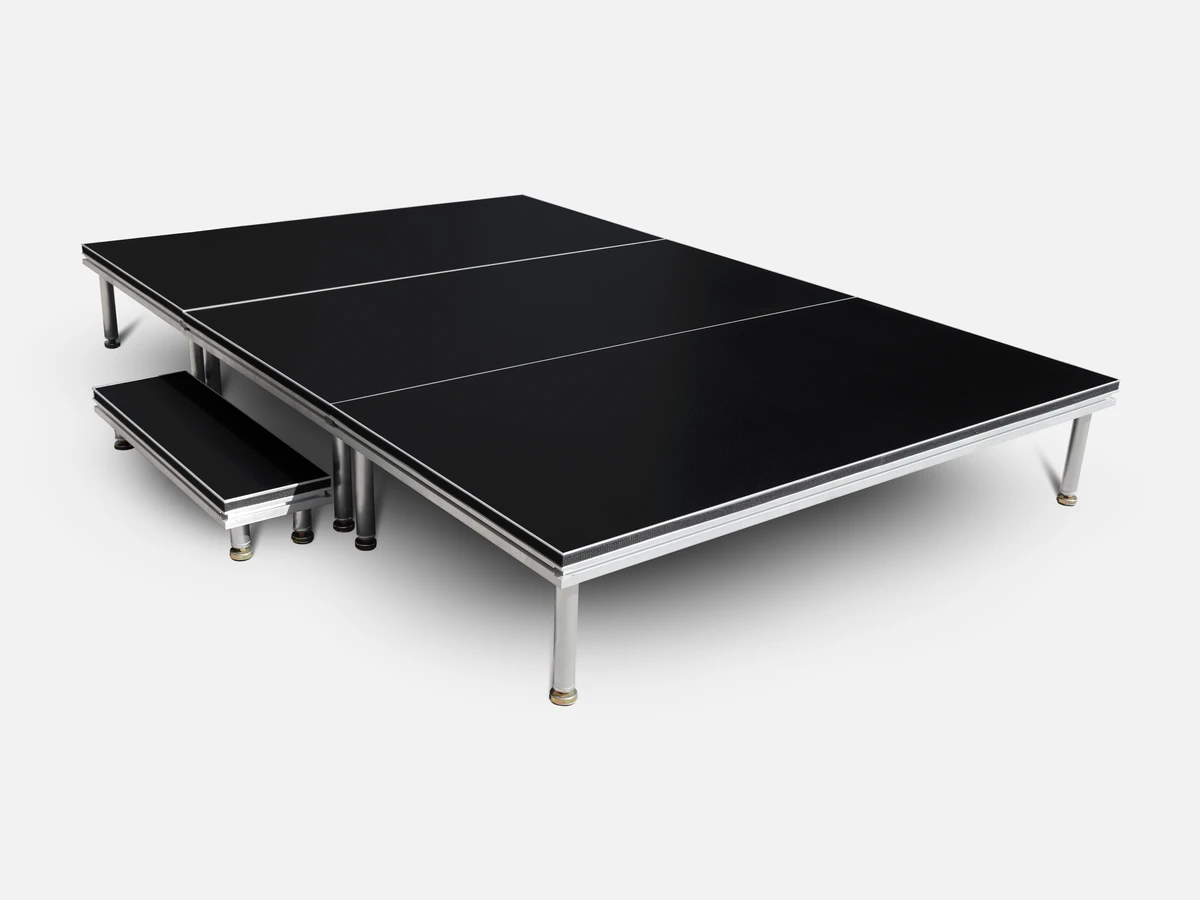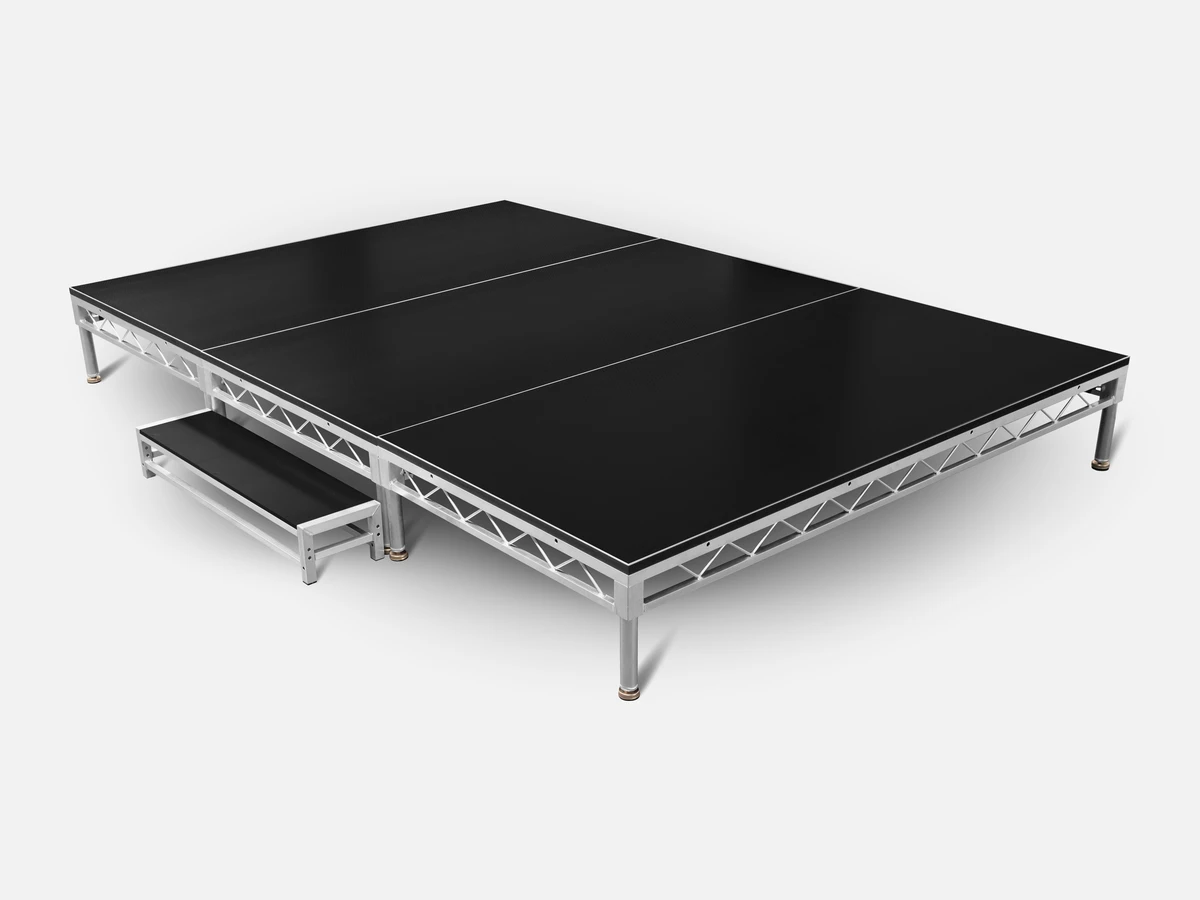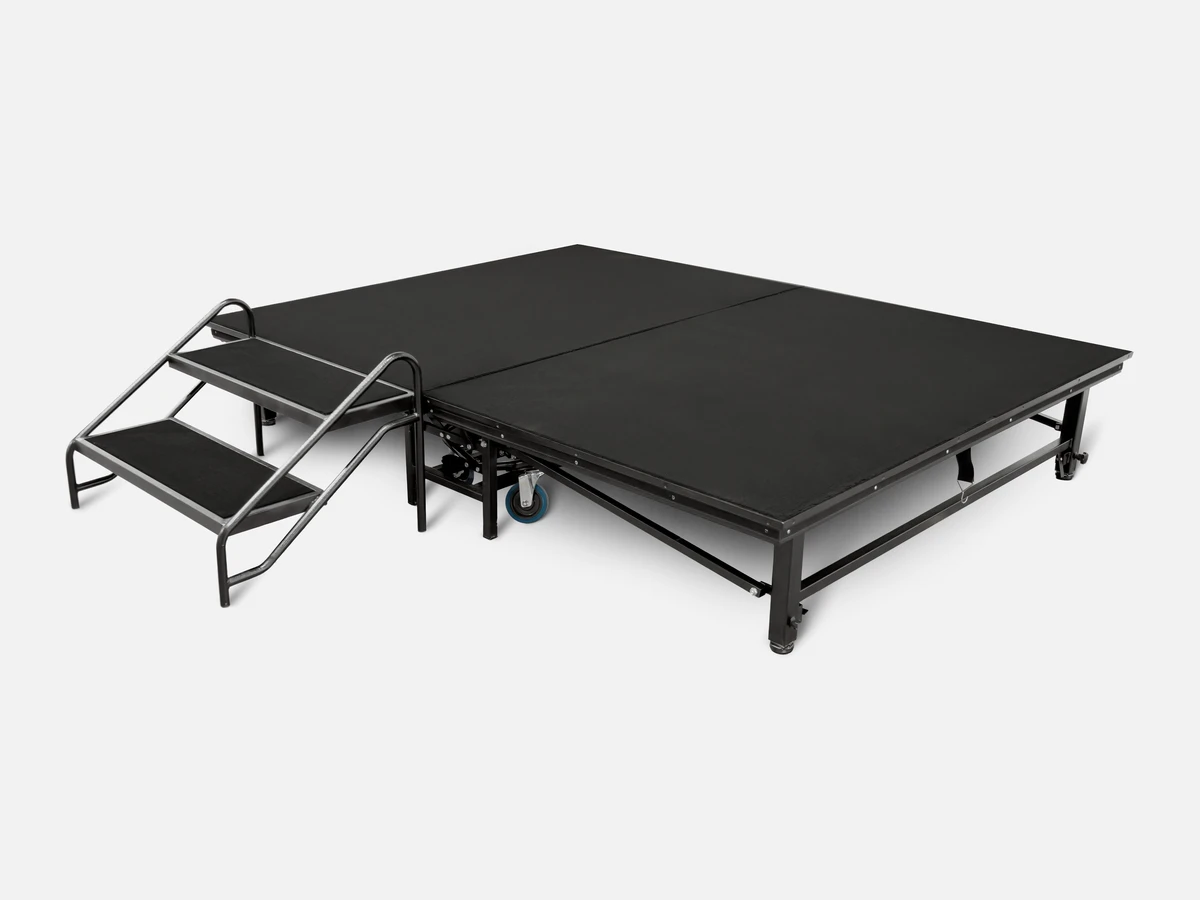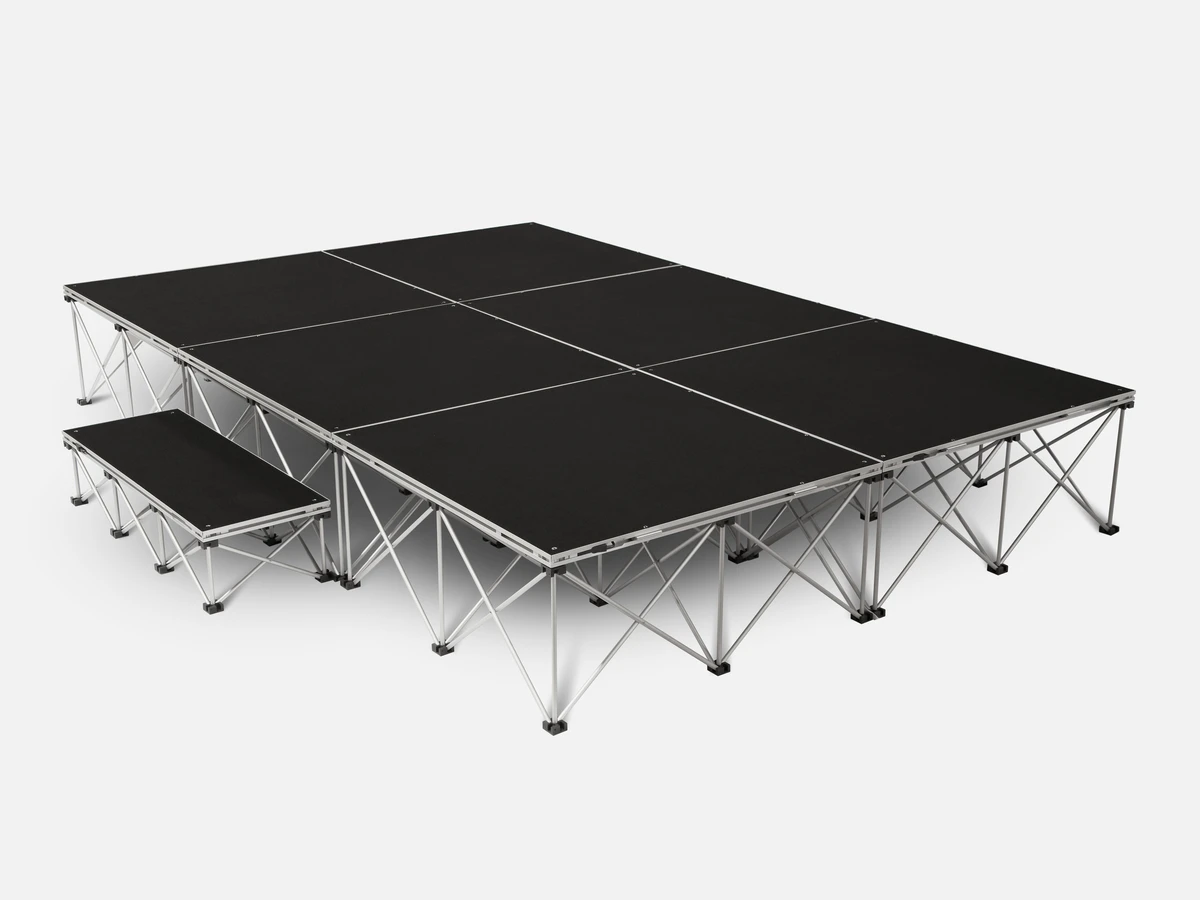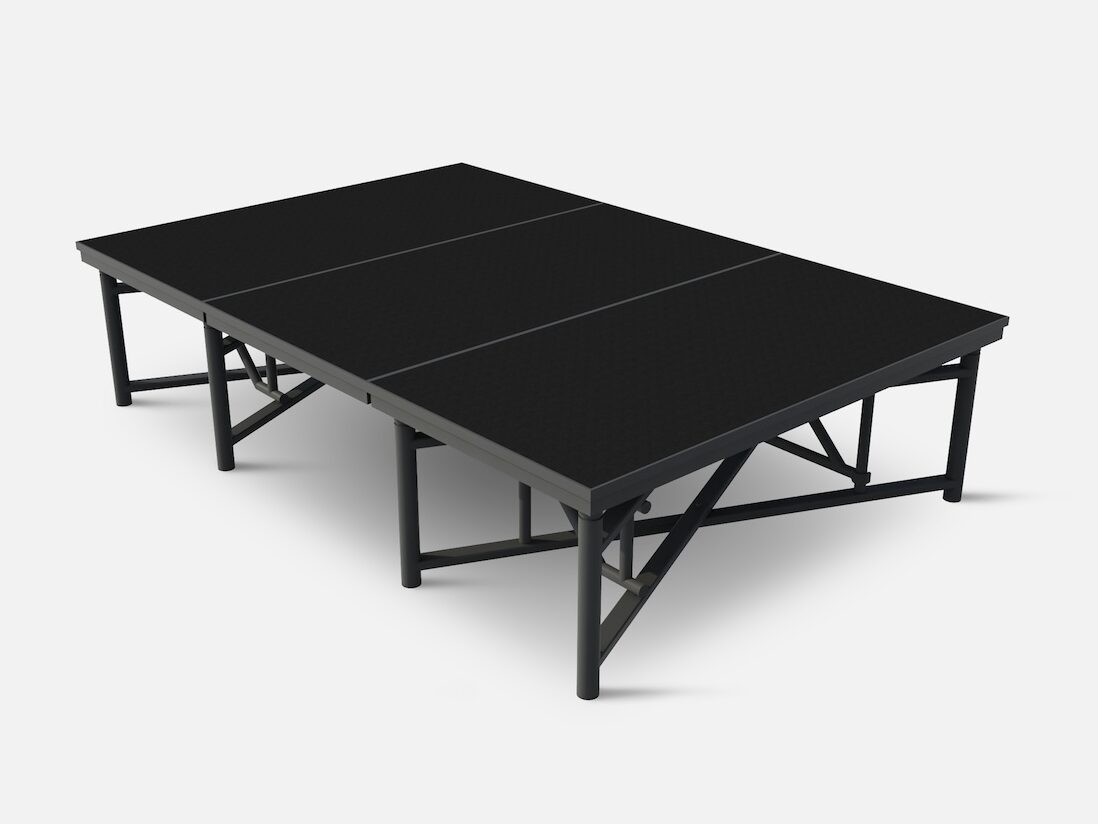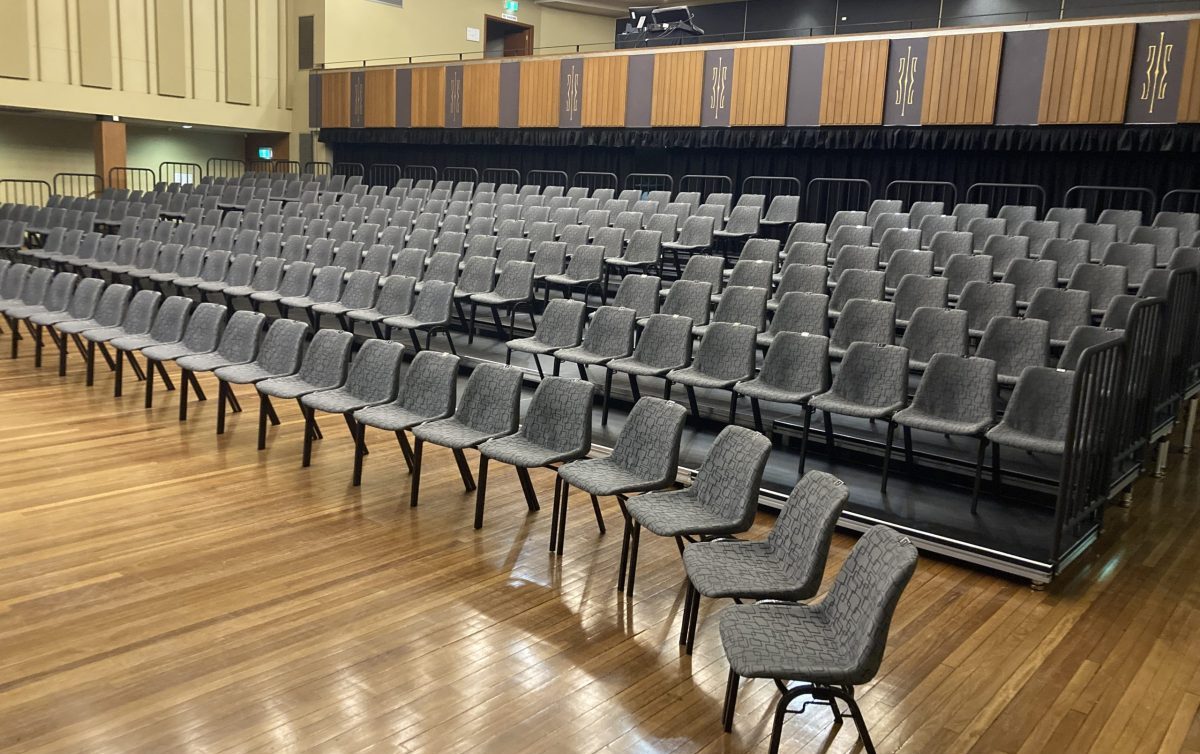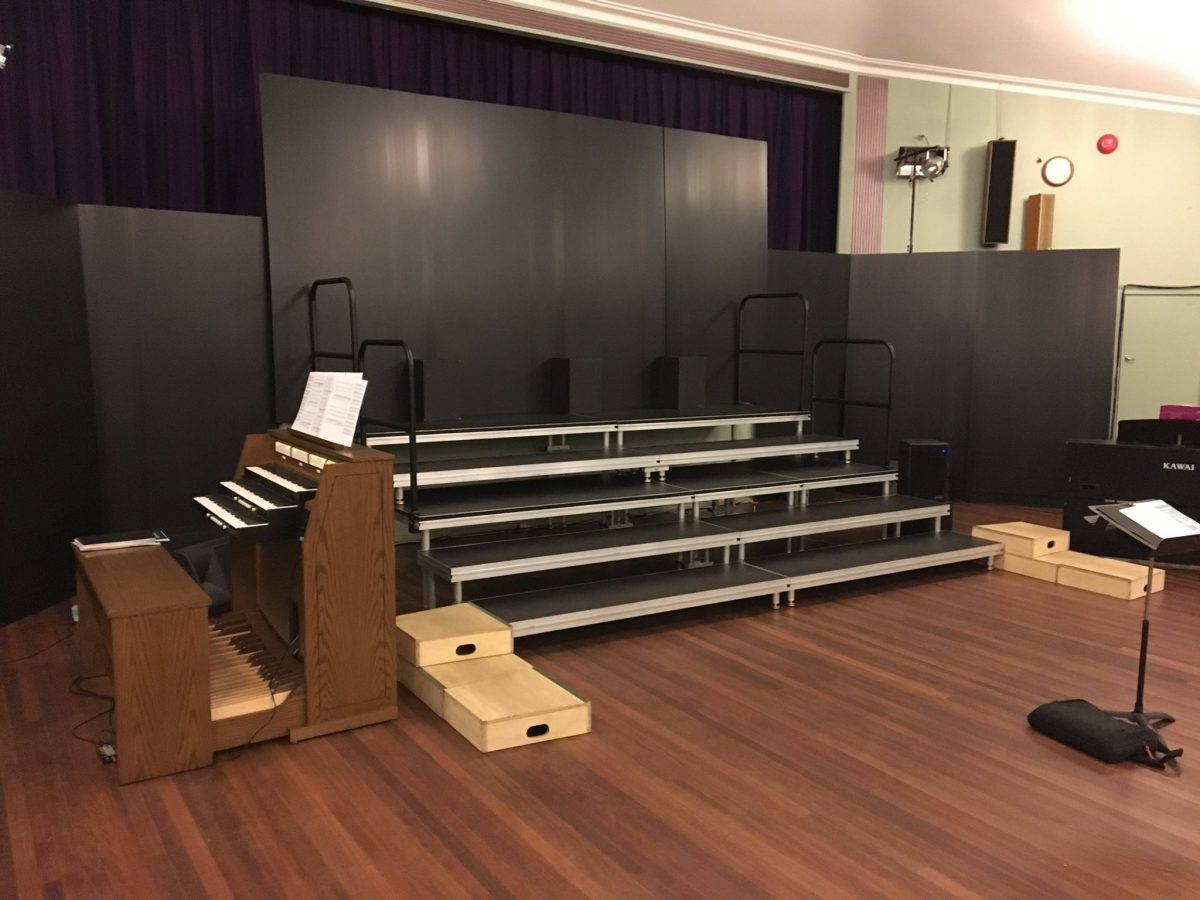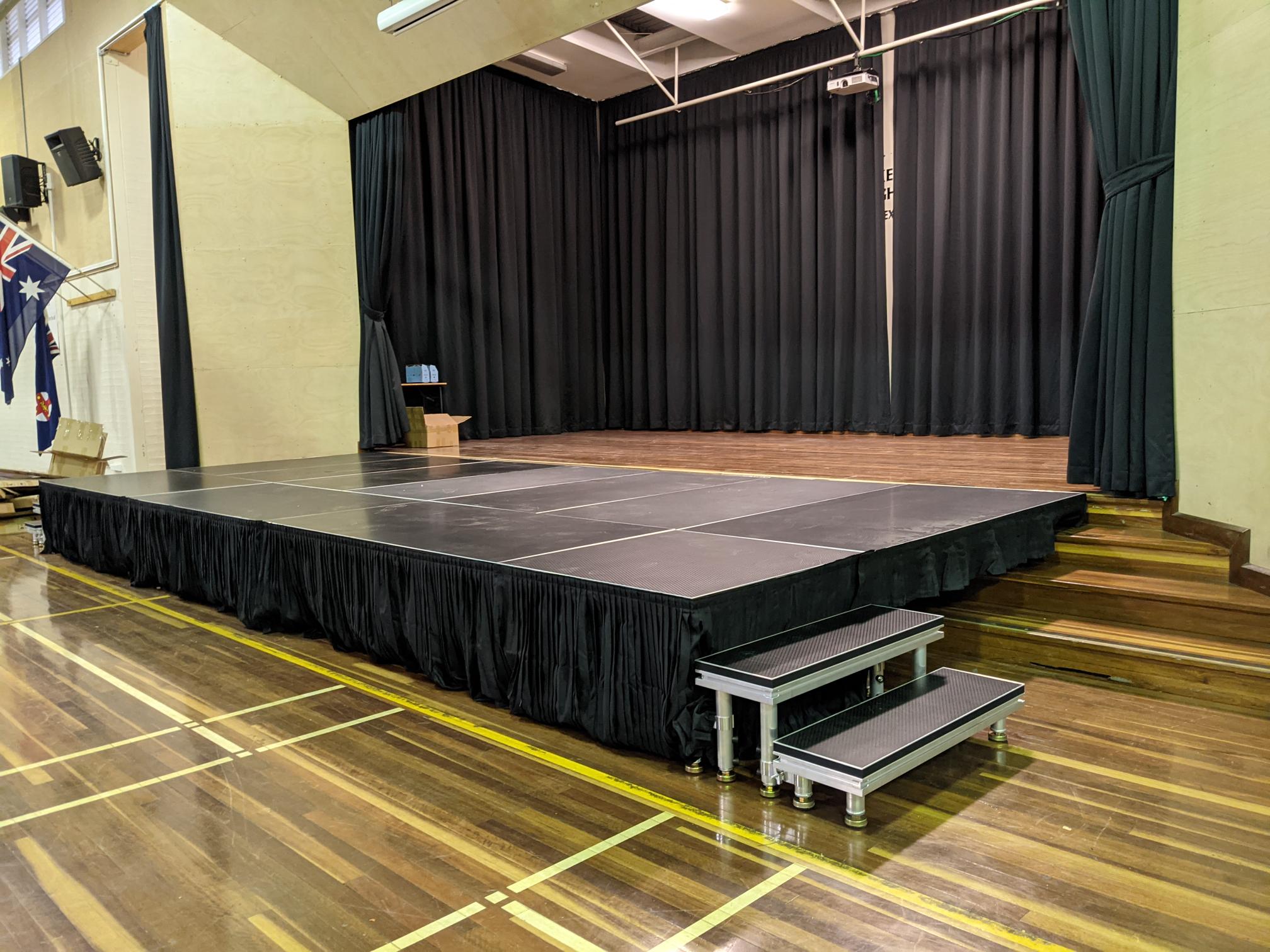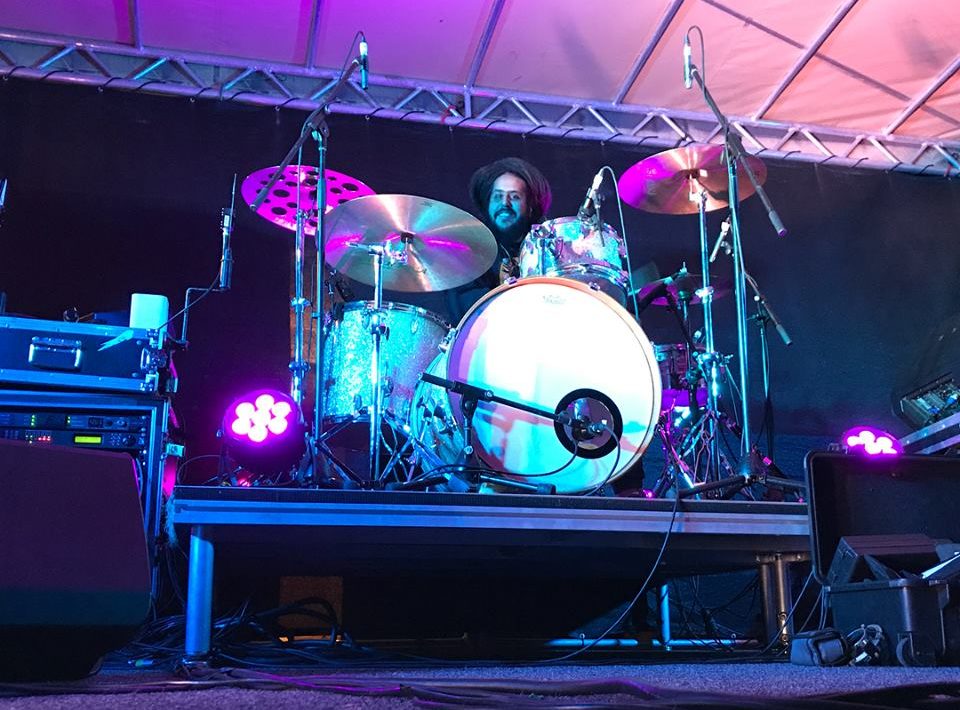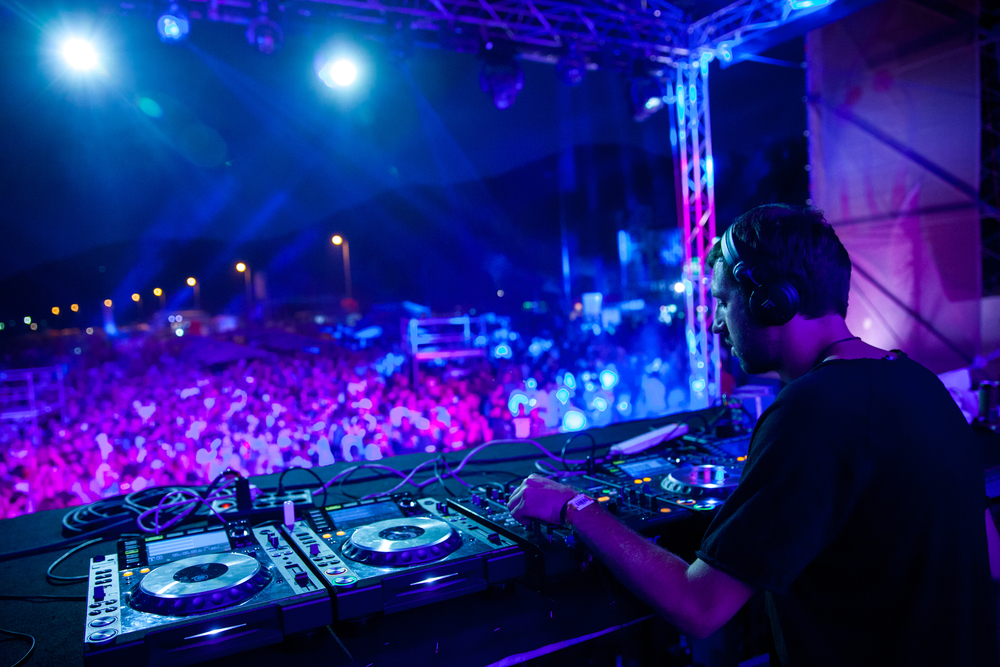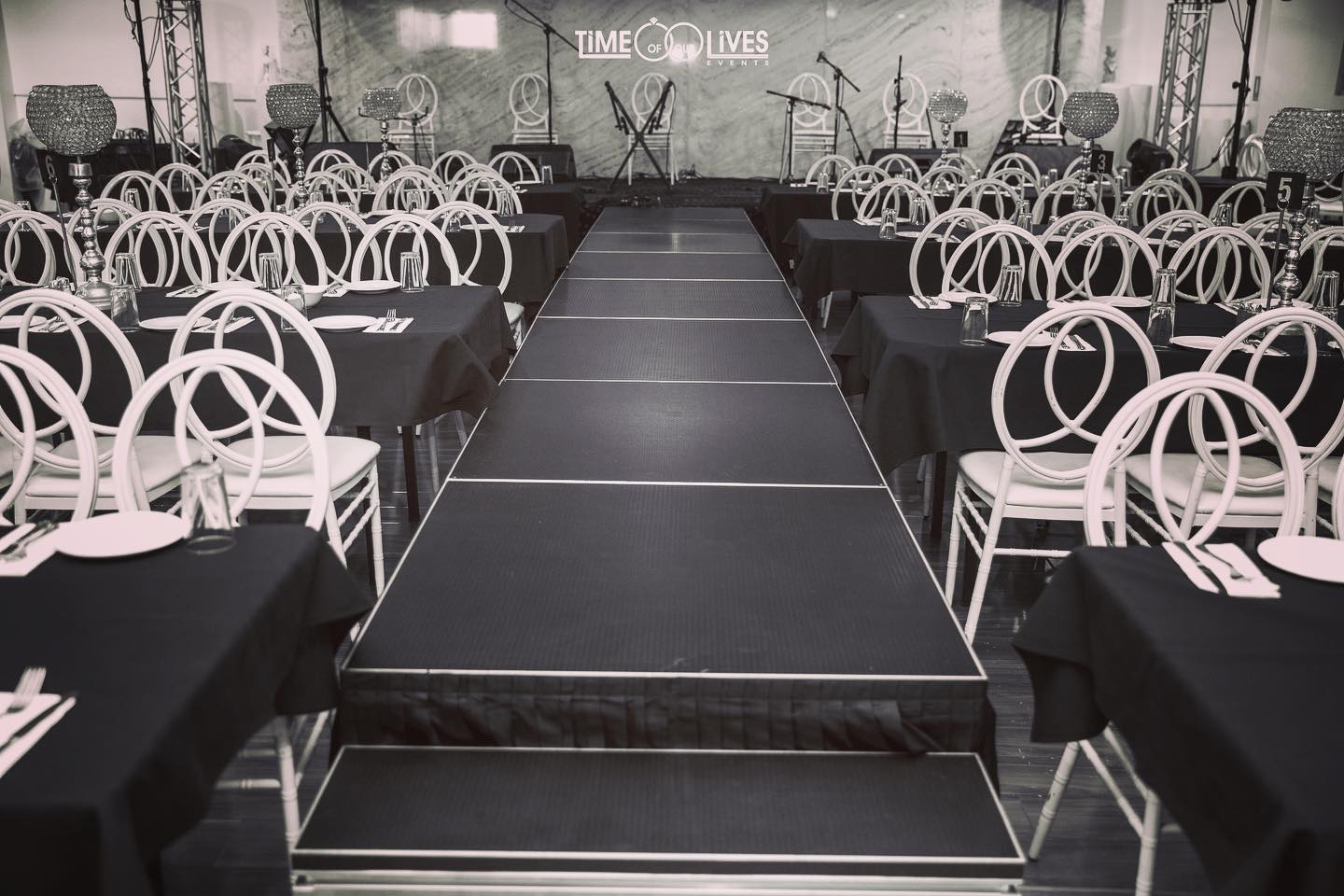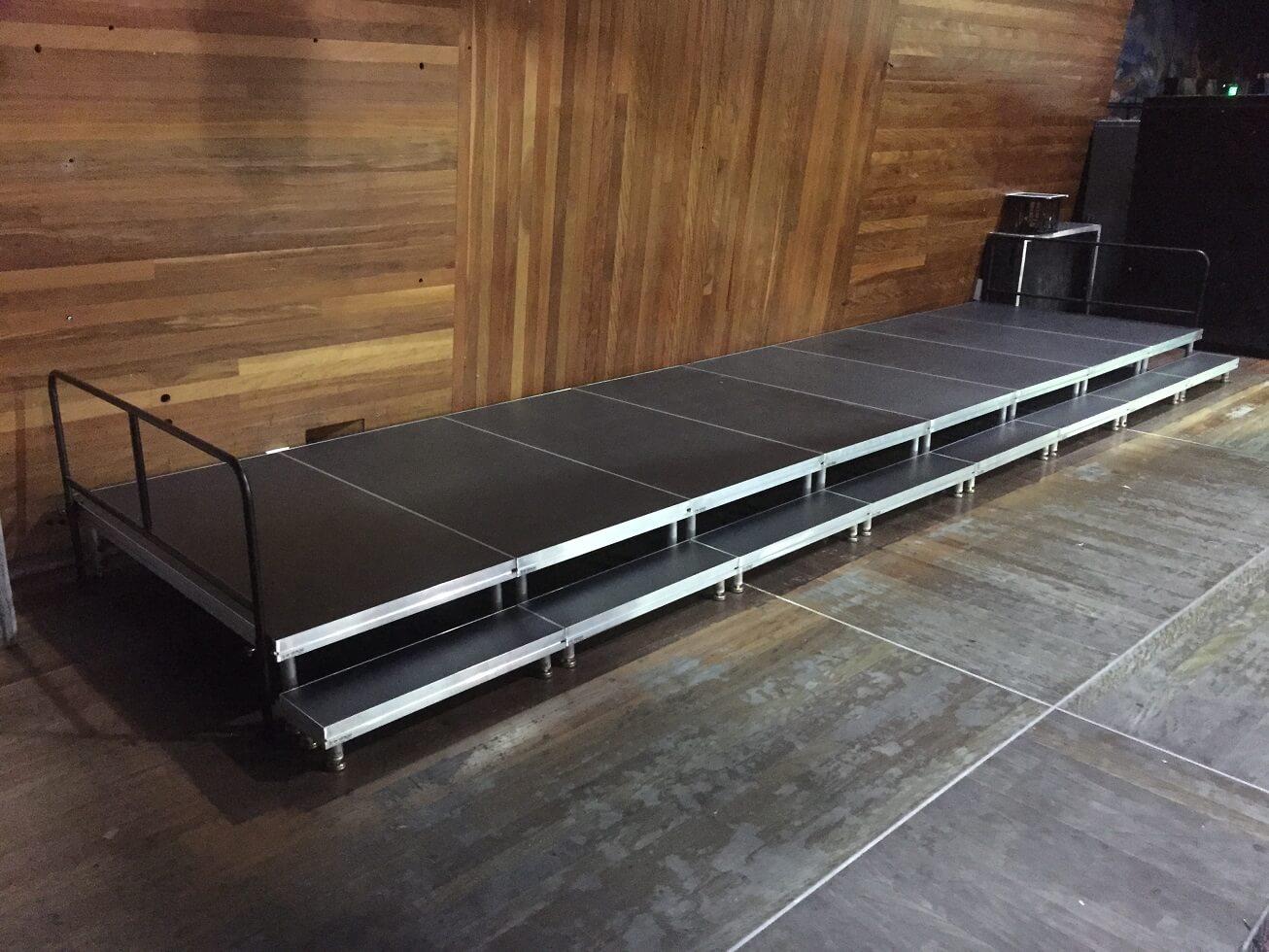June 05, 2024
If you ever find yourself in need of a portable stage for your event, a common question that arises is whether to buy or hire one. Several factors come into play to determine which option best suits your needs.
The first consideration is how frequently you anticipate using the stage. If it’s a one-off event without future use in mind, hiring may be the better choice. However, if you foresee needing a stage regularly, even just once or twice a year, purchasing could prove to be more cost-effective in the long run. For instance, let’s take a standard 6m x 4m stage as an example. Hiring such a stage for three days (including setup and teardown days, effectively one day of use) typically costs around $1800. On the other hand, purchasing a similar-sized stage would run between $8000 to $9000. This means you could recoup your investment in just 4 to 5 uses, with all subsequent use essentially being free compared to hiring.
The second factor to consider is the availability of labor resources to set up and dismantle the stage. While assembling a stage may seem daunting, modern portable stages are designed to be lightweight and straightforward to install. With lighter and stronger materials and improved designs, even non-professionals such as school teachers, maintenance staff, church volunteers, or event helpers can handle the installation. For example, Transtage’s portable stages have taken user-friendliness to the next level, requiring only a couple of team members with moderate physical strength (capable of lifting around 20kg) to handle the setup effortlessly.
The third factor is storage space. Modern portable stages can be easily disassembled and stored flat, thanks to sophisticated designs. A standard storage room in a school or hotel can comfortably accommodate a small to medium-sized stage. For instance, the storage space required for a 6m x 4m All Terrain Stage, including decks, legs, and steps, is as small as a 2m x 1m footprint with a height of about 1.5m.
Investing in a portable stage entails a significant initial expense. Still, if there’s consistent demand for it, and you have the on-site labor and storage space available, it often proves to be the more cost-effective option. A well-built stage can last over a decade or even two, providing ample time to recoup the investment, even if it’s only used infrequently.

